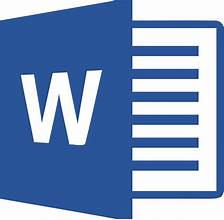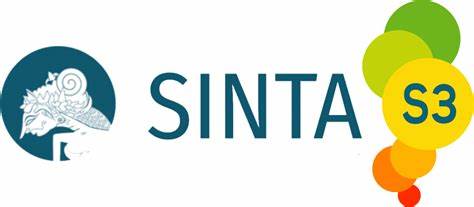DEVELOPING THE LEARNING MEDIA THROUGH TEACHMINT BASED ON FLIPPED LEARNING IN LITERAL READING COURSE
Keywords:
Media Pembelajaran, Teachmint, Pengembangan, Flipped LearningAbstract
This study aims to develop a practical reading learning media using Teachmint application in the Literal reading Course for English education students at UIN Maulana Malik Ibrahim. The need for this development arises from students’ difficulties in finding suitable and practical materials for the course. To foster interactive teaching and learning activities, the study integrates the Teachmint platform with the Flipped Learning model. This study employed a Research and Development (R&D) method using the ADDIE model. The participants were third-semester English education students at UIN Maulana Malik Ibrahim. Data were collected through interviews, validation sheets, questionnaires, and documents. Interview and document data were analyzed qualitatively to identify needs, while validation sheets and questionnaires were analyzed quantitatively to assess the product’s validity and practicality. The results of the validity test indicate that the use of Teachmint as a learning medium within the Flipped Learning model meets the criteria for excellent content and media validity, with an average value of 93.78%. In addition, the results of the practicality test revealed that 86.24% of respondents thought this learning media was extremely useful. These findings suggest that the developed learning media is both valid and practical for use in Literal Reading instruction.
References
Aini, N., Ronald, J., & Eprillison, V. (2024). Pengaruh Media Pembelajaran Teachmint dan Keaktifan Belajar Terhadap Hasil Belajar Siswa Kelas X pada Mata Pelajaran Ekonomi di SMA Negeri 4 Sumatera Barat. SAKOLA: Journal of Sains Cooperative Learning and Law, 1(2), 257-262.
Aljaraideh, Y. (2019). Students' perception of flipped classroom: A case study for private universities in Jordan. JOTSE: Journal of Technology and Science Education, 9(3), 368-377.
Amaliyah, N. (2023). Development of Technological, Pedagogical and Content Knowledge Based Learning Media. JTP-Jurnal Teknologi Pendidikan, 25(1), 107–116.
Apriyus, D. R., Rukun, K., Huda, A., & Marta, S. A. (2020). Validation of media interactive learning in vocational high school. Jurnal Pendidikan Teknologi Kejuruan, 3(1), 64–67. https://doi.org/10.24036/jptk.v3i1.4423
Ardini, L., Iswara, U. S., & Retnani, E. D. (2020). The effectiveness of using e-learning as learning media during the covid pandemic 19. JKBM (Jurnal Konsep Bisnis Dan Manajemen), 7(1), 72–81.
Arikunto Suharsimi. (2013). Prosedur penelitian suatu pendekatan praktik. In Jakarta: Rineka Cipta (p. 172). http://r2kn.litbang.kemkes.go.id:8080/handle/123456789/62880
Beal Jr, E. G. (1950). The origin of likin. Columbia University.
Branch, R. M. (2009). Instructional Design: The ADDIE Approach. Springer
Chorlay, R. (2022). Accounting for the variability of lecturing practices in situations of concept introduction. International Journal of Mathematical Education in Science and Technology, 53(5), 1071–1091.
Fatmawan, A. R., Dewi, N. P. A., & Hita, I. P. A. D. (2023). Skimming and Scanning Technique: Is It Effective for Improving Indonesian Students’ Reading Comprehension? EDUSAINTEK: Jurnal Pendidikan, Sains Dan Teknologi, 10(3), 1181–1198. https://doi.org/10.47668/edusaintek.v10i3.897
Hannafin, M. J., & Land, S. M. (2000). Technology and student-centered learning in higher education: Issues and practices. Journal of Computing in Higher Education, 12(1), 3–30. https://doi.org/10.1007/BF03032712
Hasriadi, H. (2022). Metode Pembelajaran Inovatif di Era Digitalisasi. Jurnal Sinestesia, 12(1), 136–151.
Isnaeni, N., & Hidayah, D. (2020). Pembelajaran Yang Nyata Dan Jelas . Jurnal Syntax Transformation, 1(5), 148–156.
Kasiuhe, D. B., Sulangi, V. R., & Pesik, A. (2023). Pengembangan Desain Pembelajaran Matematika Materi SPLDV Dengan Teachmint Berbantuan Microsoft Math Solver. Journal on Education, 06(01), 280–292.
Khasanah, S. U., & Untari, R. S. (2022). Development of E-modules as Learning Modules in Vocational High Schools. Academia Open, 7, 10–21070.
Kiptiyah, M., Misbah, M., & Rahman, M. (2022). Liberation Education in the Surah of the Qur'an Al-'Ankabut 43. Scaffolding: Jurnal Pendidikan Islam dan Multikulturalisme, 4(2), 430-443.
Korolija, J., Jovic, G., Steljic, B., & Mandic, L. (2005). Presentation and consolidation of physical and chemical changes of substances through pupils’ active work/Presentación y consolidación de cambios físicos y químicos de sustancias a través del trabajo activo de los estudiantes. Journal of Science Education, 6(2), 76.
Kurniawan, R., & Fitria, Y. (2023). E-Learning Using the Flipped Classroom Model-Based Teachmint Application and its Impact on Student Science Learning Outcomes. International Journal of Elementary Education, 7(3), 485-495.
https://doi.org/10.23887/ijee.v7i3.59262
Matban, N. (2023). Exploring Parental Attitudes Towards Technology-Assisted English Language Learning (TALL) For Young Children in Turkiye (Doctoral dissertation, University of Warsaw).
Nainggolan, A. C., & Panjaitan, S. N. (2024). Peningkatan Penggunaan Aplikasi Teachmint Sebagai Media Pembelajaran Matematika Bagi Warga Dan Siswa-Siswi Tanjung Selamat. BESIRU: Jurnal Pengabdian Masyarakat, 1(2), 45-54.
Prasetyo, D., Wibawa, B., & Musnir, D. N. (2020). Development of mobile learning-based learning model in higher education using the addie method. Journal of Computational and Theoretical Nanoscience, 17(2–3), 911–917.
Priyastuti, M. T. (2023). Relationship between google meet learning media and nursing student GPA STIKES ST Elisabeth Semarang. Enrichment: Journal of Management, 13(2), 784–790.
Richards, J. C. (2006). Materials development and research—making the connection. Relc Journal, 37(1), 5-26.
Sanjaya, W., Desyandri, D., Miaz, Y., & Rahmi, U. (2024). Innovation of Interactive Science Teaching Materials Based on Problem Based Learning Model through Learning Management System in Elementary School. Jurnal Penelitian Pendidikan IPA, 10(7), 4442–4452.
Setyo, T. (2023, December). Mewujudkan Kesetaraan Dan Aksesibilitas Dalam Sistem Pendidikan Kontemporer (Studi Inklusivitas Manajemen Pendidikan Islam Di Madrasah Aliyah Al-Muhammad Cepu Jawa Tengah). In Prosiding Seminar Internasional Peluang dan Tantangan Perguruan Tinggi di Era Industri 4.0 dan Society 5.0 (Vol. 1, No. 1, pp. 394-408).
Silalahi, D. E., Siallagan, H., Munthe, B., & Sihombing, P. S. R. (2022). Investigating Students’ Motivation toward the Use of Zoom Meeting Application as English Learning Media during COVID-19 Pandemic. Journal of Curriculum and Teaching, 11(5), 41–48.
Sudarsana, I. K., Arini, N. W., Mastini, G. N., Sukerni, N. M., & Pusparini, L. D. (2020). Learning media: The development and its utilization. Yayasan Ahmar Cendekia Indonesia.
Sugiyono. (2018). Metode Penelitian Kuantitatif, Kualitatif, dan R&D. Alfabetha
Suka, R. (2023). Pengaruh Model Flipped Classroom-Problem Based Learning Berbantuan Teachmint Terhadap Keterampilan Berpikir Kritis Peserta Didik Pada Materi Gelombang Bunyi (Doctoral dissertation, Universitas Pendidikan Indonesia).
Sulastiani, Y., Sholih, S., & Rusdiyani, I. (2023). Analisis Respon Guru Dan Siswa Terhadap Penggunaan Media Pembelajaran Video Interaktif Aplikasi Teachmint Pada Materi Sistem Organisasi Sel Kelas Vii Di Smpn 5 Rangkasbitung Dalam Meningkatkan Prestasi Belajar. JTPPm (Jurnal Teknologi Pendidikan dan Pembelajaran): Edutech and Intructional Research Journal, 10(1), 1-8.
Sunarto, M. J. D., Hariadi, B., Tan, A., Lemantara, J., & Sagirani, T. (2023). Pelatihan Model Pembelajaran Abad 21 dengan Flipped Learning untuk Guru SMA. Lumbung Inovasi: Jurnal Pengabdian Kepada Masyarakat, 8(1), 18–25. https://doi.org/10.36312/linov.v8i1.1103
Thakur, M. (2021). Transition From Traditional To Online Teaching Using Innovative Technologies. The Opportunities Of Uncertainties: Flexibility And Adaptation Needed In Current Climate, 136.
Tomlinson, C. A. (2017). How to differentiate instruction in academically diverse
classrooms. Ascd.
White, F. (1998). The overview effect: Space exploration and human evolution. AIAA.
Widyahening, C. E. (2018). Penggunaan Teknik Pembelajaran Fishbone Diagram Dalam Meningkatkan Keterampilan Membaca Siswa. Jurnal Komunikasi Pendidikan, 2(1), 11-19. https://doi.org/10.32585/jkp.v2i1.59
Downloads
Published
Issue
Section
License

This work is licensed under a Creative Commons Attribution-ShareAlike 4.0 International License.
The author is responsible for acquiring the permission(s) to reproduce any copyrighted figures, tables, data, or text that are being used in the submitted paper. Authors should note that text quotations of more than 250 words from a published or copyrighted work will require grant of permission from the original publisher to reprint. The written permission letter(s) must be submitted together with the manuscript.




